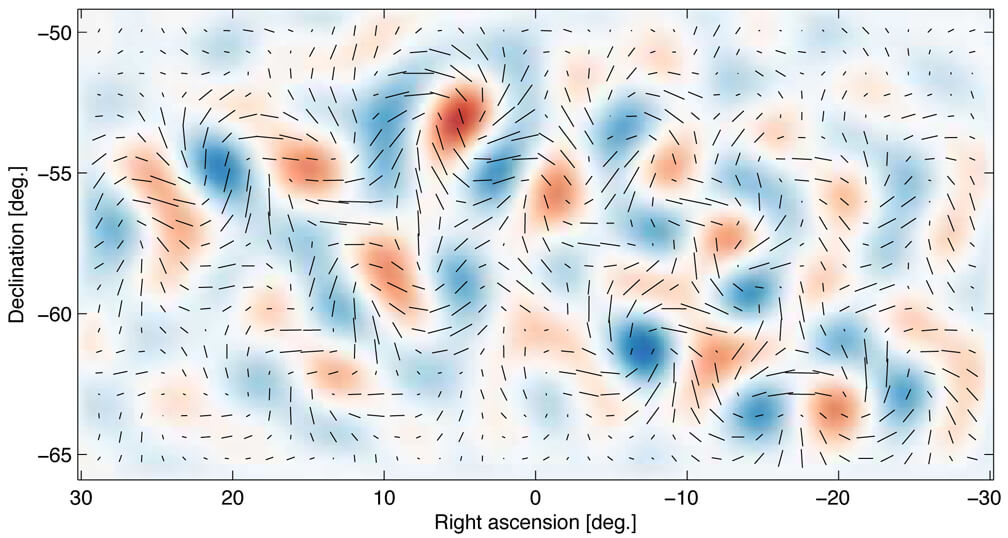- Get link
- X
- Other Apps

Almost 14 billion years ago, an event occurred in outer space that triggered the Big Bang and the appearance of the Universe in which we live. In just one fraction of a second, the Universe has grown to such an extent that even the best of the most modern telescopes cannot see its edges. All these words were only a theory. However, a group of scientists from the Center for Astrophysics, a joint venture of the Harvard Observatory and the Smithsonian Astrophysical Observatory, found that they can finally help us explain how the Universe appeared.
Such a discovery in scale of scientific significance is comparable to the discovery of the Higgs boson in the framework of the experiment with the Large Hadron Collider in 2012. A group of researchers from the collaboration BICEP2 announced that it had found the first direct evidence of the inflationary model of our Universe, as well as the first direct evidence of the existence of gravitational waves, described by scientists as the “Big Bang echo”. The evidence found for the first time shows a direct connection between quantum mechanics and the general theory of relativity.
“The signs found are one of the most significant achievements in the entire history of cosmology,” says John Kovacs of the Harvard-Smithsonian Center for Astrophysics, the head of the BICEP2 team that made this discovery.

Dark lines in the image are turbulences of the background radiation, which in turn can be caused by gravitational waves caused by inflation.
These incredible data scientists received through the observation of the cosmic microwave background radiation, or relic radiation, appeared in the first seconds after the Big Bang. The subtle fluctuations in this radiation gave scientists an idea of what the early Universe was in the first seconds of its existence. For example, a small difference in temperature shows where and in which part the Universe was denser, and also which parts of it were more densely populated with galaxies and clusters.

Since the cosmic microwave background radiation is also a form of light, it also has its properties, including the polarization property. On Earth, sunlight is scattered by the atmosphere and polarized. In space, cosmic microwave background radiation is scattered by atoms and electrons, also becoming polarized.
"Our team was able to detect a special type of polarization, called B-mode, which is caused by the effect of gravitational lensing," said study co-author Jamie Bock from JPL laboratory.
Passing through space, gravitational waves affect it and leave a certain imprint in the picture of the cosmic microwave background radiation. Gravitational waves have a certain directionality (almost like waves of light) and can have left-handed polarization or right-handed polarization.
“Due to its orientation, the vortex B-modes are endowed with a unique signature of gravity waves. Thanks to this unique feature, we managed to get an image of the gravitational waves of the early Universe, ”says Chao-Lin Guo from the SLAC National Accelerator Laboratory at Stanford.
The team conducted its research at the South Pole, since this is the place that is most suitable for such work.
“The South Pole is the ideal and most suitable place to study the waves of the Big Bang, because this place is most closely located to space. This place is just perfect for astronomers, ”says Kovacs.
The detected signal of the B-mode polarization signature turned out to be much more powerful than scientists previously could have imagined. More than three years, scientists have analyzed the data to avoid the possibility of the presence of any errors in them. At some point, they even suggested that galactic dust could show such a signature, but as a result of further observations, this option was completely excluded.
“For us, this turned out to be a search for a needle in a haystack, but instead of a needle, we found a whole armature,” co-author Clem Pike from the University of Minnesota complements the words of her colleagues.
Commenting on the significance of this discovery, Harvard theorist Avi Loeb noted:
“First of all, this work opens our eyes and gives answers to the most basic questions: why do we exist and how did the Universe appear? There is no longer a question: is the model of an inflationary universe valid? This discovery proves it to us. Here we are talking about when the effect of inflation began and how powerful it turned out to be. ”
BICEP2 is already the second coordination program in the framework of the BICEP and Keck Array experiments. Four researchers took part in it: John Kovach (Harvard), Clem Pike (Minnesota), Jamie Block (Caltech / JPL), and Chao-Lin Guo (Stanford / SLAC). The joint efforts of four scientists, as well as assistance from a talented team of students and other researchers, made it possible to make this amazing discovery. An important role in the framework of the BICEP2 program was played by the University of California at San Diego, the University of British Columbia, the National Institute of Standards and Technology, the University of Toronto, the University of Cardiff, and the Atomic Energy Commission (French Research Institute).
Among physicists, there is already talk of who can get the next Nobel Prize.
The article is based on materials .
- Get link
- X
- Other Apps
Comments
Post a Comment